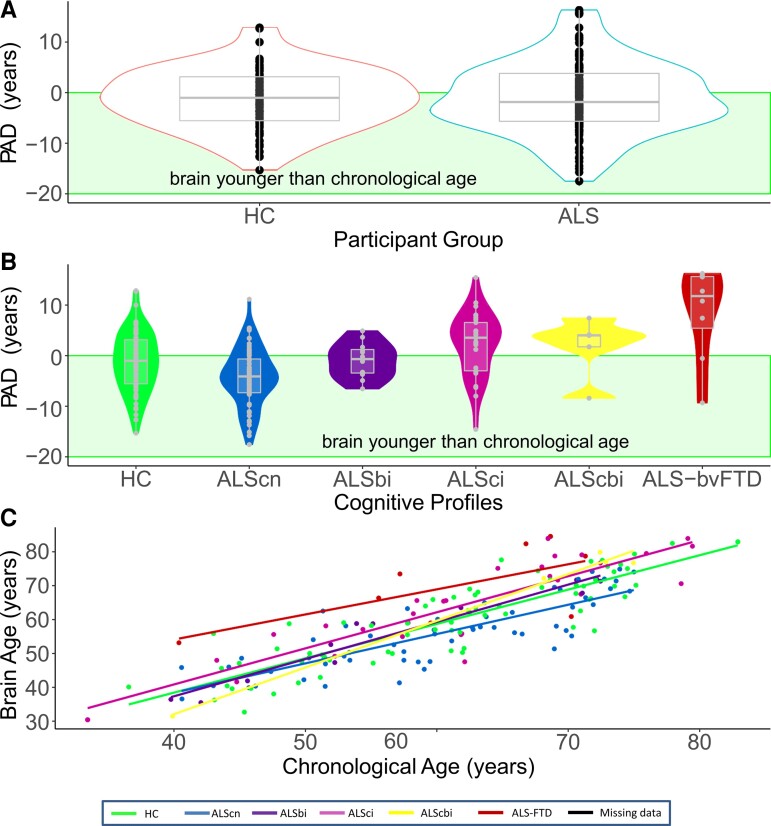Figure 1.
Predicted brain age difference (PAD) is increased in cognitively/behaviourally impaired patients with ALS. (A) The multivariate model predicted brain age accurately in our healthy controls (HCs). There was no difference in PAD in patients with ALS per se (Bayesian independent samples t-test, BF01 = 5.92, error% = 1.380e − 5, favouring the absence of differences). (B) Cognitive/behavioural impairment increased PAD score significantly (ANCOVA main effect, BF10 = 524.74), while ALScn patients showed significant decreased PAD (ANCOVA post hoc test, BF10 = 7.71 in favour of this difference). (C) Chronologic age and predicted brain age correlated strongly and had a very narrow credible interval, suggesting a homogeneous, reliable effect (Pearson’s rho for the overall cohort = 0.85, with a 95% credible interval from 0.80 to 0.88; BF10 = 2.19e + 48).

